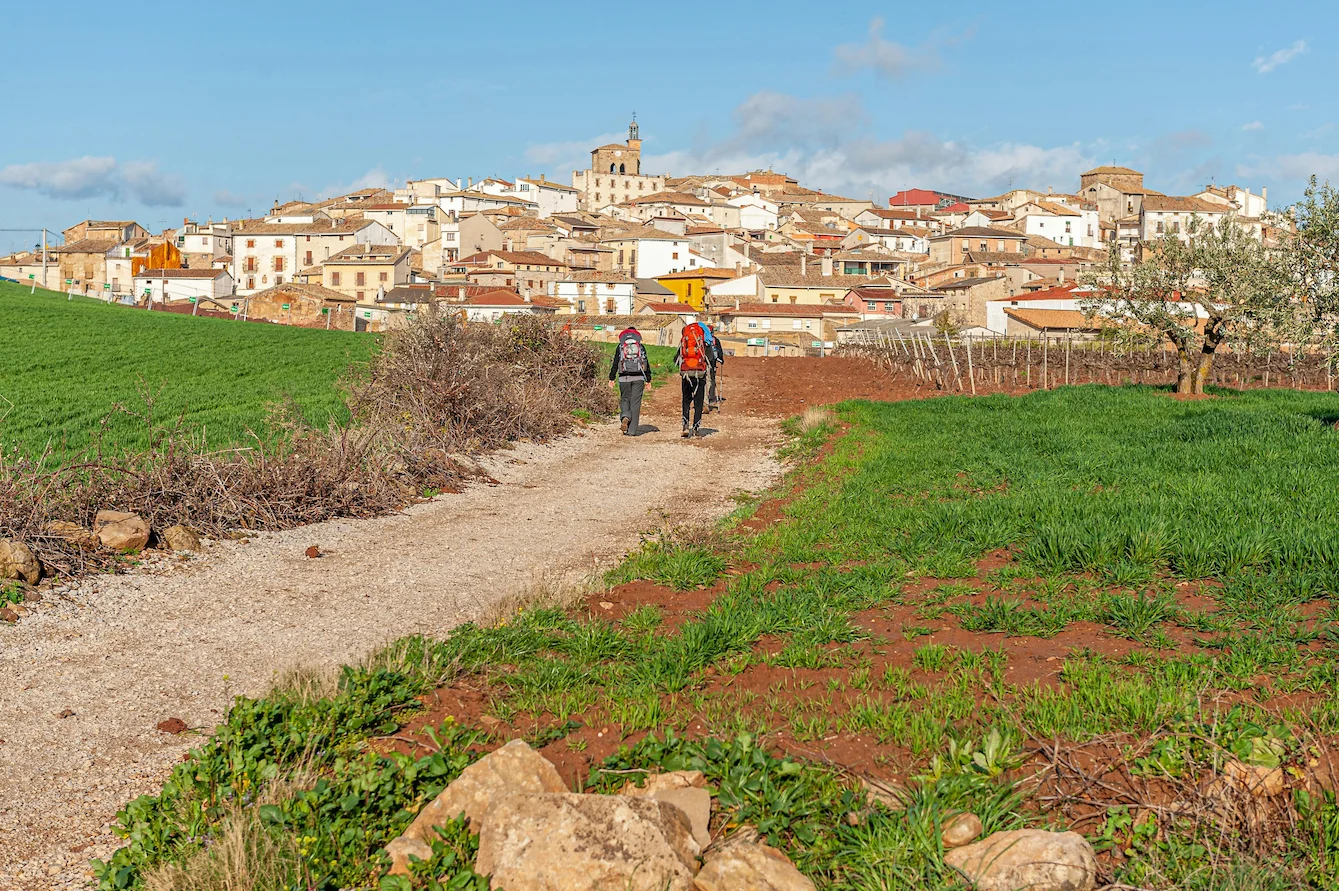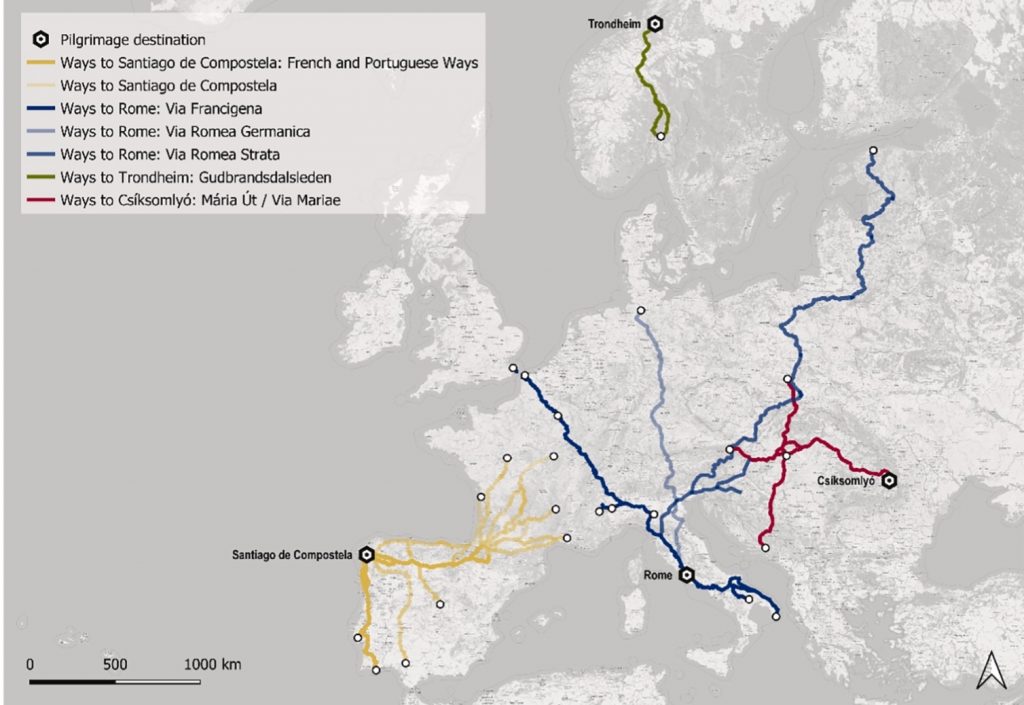Integrating Rural Heritage into Pilgrimage Tourism: Strategies for Sustainable Development

Group with Backpacks Walking on the Way of St James Towards Galicia, Spain. Burkard Meyendriesch.
The article “Towards a Methodology of Good Practices for Heritage-Led Rural Regeneration: From the Main Paths to the Surrounding Areas,” (Download) published in Cities (2025), explores heritage-based rural regeneration in areas near pilgrimage routes. Written by María Andrade Suárez, Estefanía López Salas, Iria Caamaño Franco, and Antonio Álvarez Sousa, researchers at the University of Coruña and members of the rurAllure project, this study examines how tourism and heritage valorization can contribute to sustainable development in rural areas that are often overlooked despite their proximity to major pilgrimage paths.
The article highlights a key issue: while thousands of people travel pilgrimage routes each year, the economic and social benefits are concentrated in locations directly along the paths. Meanwhile, surrounding rural areas, despite their rich cultural and natural heritage, remain excluded from these advantages. This study seeks strategies to integrate these areas into the pilgrimage experience and promote sustainable tourism development.
To address this challenge, the authors analyze four case studies across Europe:
- The Way of St. James (Camino de Santiago) – Spain and Portugal.
- The Routes to Rome – France, Switzerland, and Italy.
- The St. Olaf Ways to Trondheim – Norway.
- The Marian Way to Csíksomlyó – Slovakia, Hungary, and Romania.

The research methodology includes 16 interviews, 384 pilgrim surveys, statistical data, and prior studies. Through this approach, the authors identify best practices for heritage-led rural regeneration.
One key finding is that pilgrims, unlike conventional tourists, demonstrate high flexibility in their itineraries and are open to detours if presented with attractive opportunities. This creates a unique chance to develop strategies that incorporate cultural and natural activities in nearby rural areas. Proposed solutions include tailored tourism packages, improved signage, digital promotion tools, and local community collaboration networks.
The article also presents a SWOT-CAME analysis to assess strengths, weaknesses, opportunities, and threats in these rural regions. For instance, while the rich cultural and natural heritage is a major asset, poor infrastructure and lack of tourism promotion remain challenges. Based on this analysis, the authors propose strategies for reorienting and adapting tourism policies to maximize the potential of these rural areas.
Another significant contribution is the Manual of Good Practices, developed as part of the rurAllure project. This manual compiles successful initiatives that can be replicated on other pilgrimage routes to integrate rural heritage into the pilgrim experience. Among the best practices highlighted are cultural festivals, thematic routes, accessibility workshops, and digital marketing strategies.
In conclusion, the article offers an innovative approach to sustainable rural development by leveraging cultural and natural heritage near pilgrimage routes. Its findings not only contribute to tourism and rural regeneration research but also provide practical tools for implementing strategies across different European contexts.